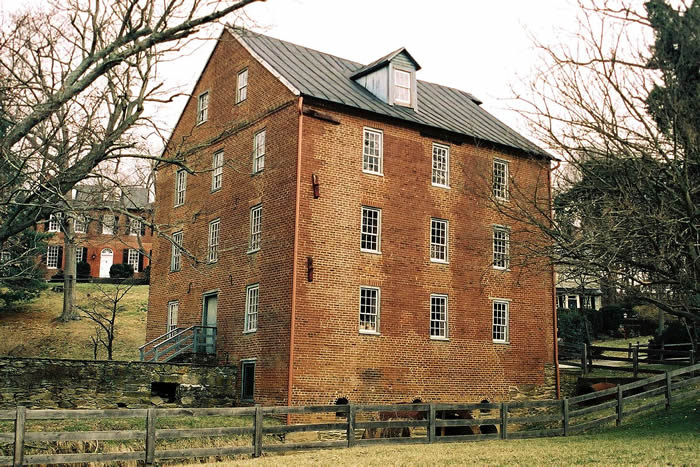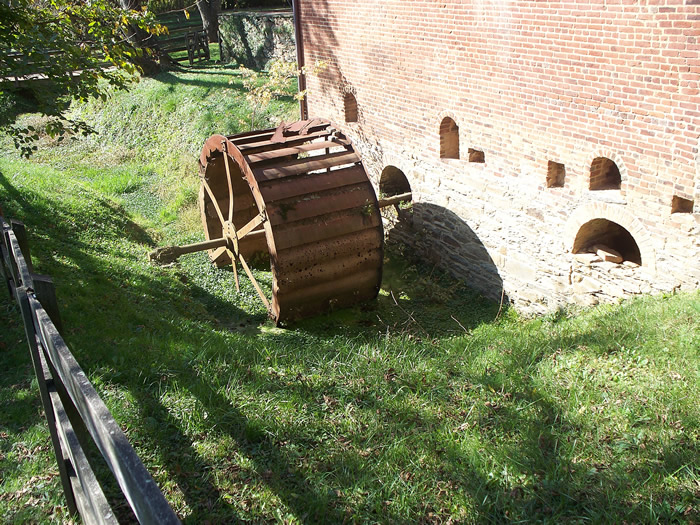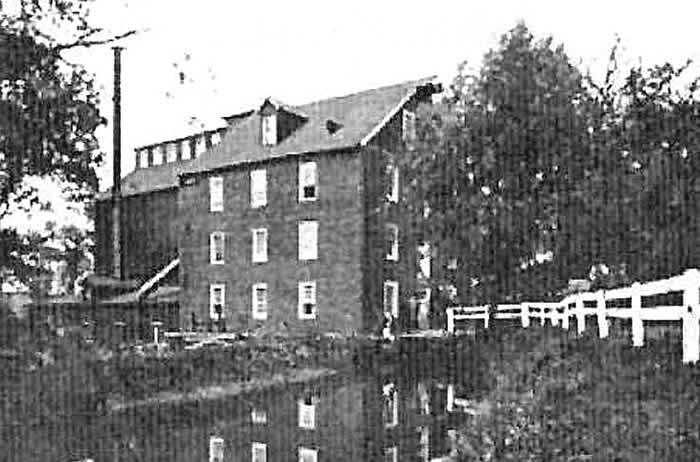
Waterford Mill
Loudoun Co. | Virginia | USA
Watersource: South Fork Catoctin Creek.
Waterford Mill
Go 4.5 miles NE of US 15 at Leesburg, Va. on Sh 7/W. Market St., turn right on Sh 9 for 1+ miles, turn right on Sh 662 and procede 5-5.5 miles to the junc. of Sh 662/Second St. and Sh 665/High St. in Waterford, Va.

The present mill is the result of a rebuilding and enlarging of the 1762 mill that was built to replace Amos Janney's 1733 log mill. Janney was a Buck's County, Pennsylvania Quaker who moved to the Catoctin Creek area of the Loudoun Valley in 1733. The town was known as Janney's Mill into the 1780's, when it's name changed to Waterford.

Amos' son, Mahlon Janney, built the larger, 1762 two story mill of wood on a stone foundation at the site of the present mill rebuilt, of brick on the Mahlon's stone foundation, in the late 1820's by, then owner, Thomas Phillips. Mahlon died in 1812, several years after selling to Jonas Potts. Various owners until Samuel Means' ownership and operation in the late 1850's. A brand name of flour produced was "White Lily". Buisness was very prosperous until the Confederates, during the Civil War, drove Means from his home & mill. The business was ruined; and, the mill was sold after the war.

In 1885 the new roller system was introduced by James F. Dodd in addition to the stone grinding. Also, a steam boiler and stack and a large 3 story frame addition was added to the rear of the mill in 1888. After numerous owners, William S. Smoot bought the mill in 1922 and ran it until he died in 1936. Slow business in the last half of Smoot's operation caused the mill to deteriorate. The next owner, Edward Chamberlin, not knowing much about milling, hired George Babson & Festus Foster to upgrade the mill. Under new millers, Mr. Tinsman & Son, the mill prospered as "Quaker Town Products".

The mill went back to the Smoot family in 1938; but, William S. Smoot Jr. was not a milling businessman. Competition from modern flour mills, the shifting of the wheat milling center to the upper midwest, and the Great Depresssion all figured in the mill ceasing flour milling in 1939 and subsequent closure. The milling machinery and the frame, rear addition were sold as scrap for the war effort in the early years of the Second World War.

The Waterford Foundation, formed in 1943, purchased the old Mill and the Schooley Mill in 1944. The mill has been a museum displaying 18th & 19th century crafts for about 55 years. Check out the website for more history of the mill and Waterford.

Waterford Mill from a 1905 postcard which shows the three-story frame and sheet-metal addition to the read of the mill in the 1880s. In the foreground is the head race carrying water to the mill. About the time the photograph was taken a single Fitz Water Wheel was installed in the mill. At one time teams of horses and wagons hauled barrels of flour the the B&O PRailroad sidings and tp the C&O Canal for expot to distant markets.